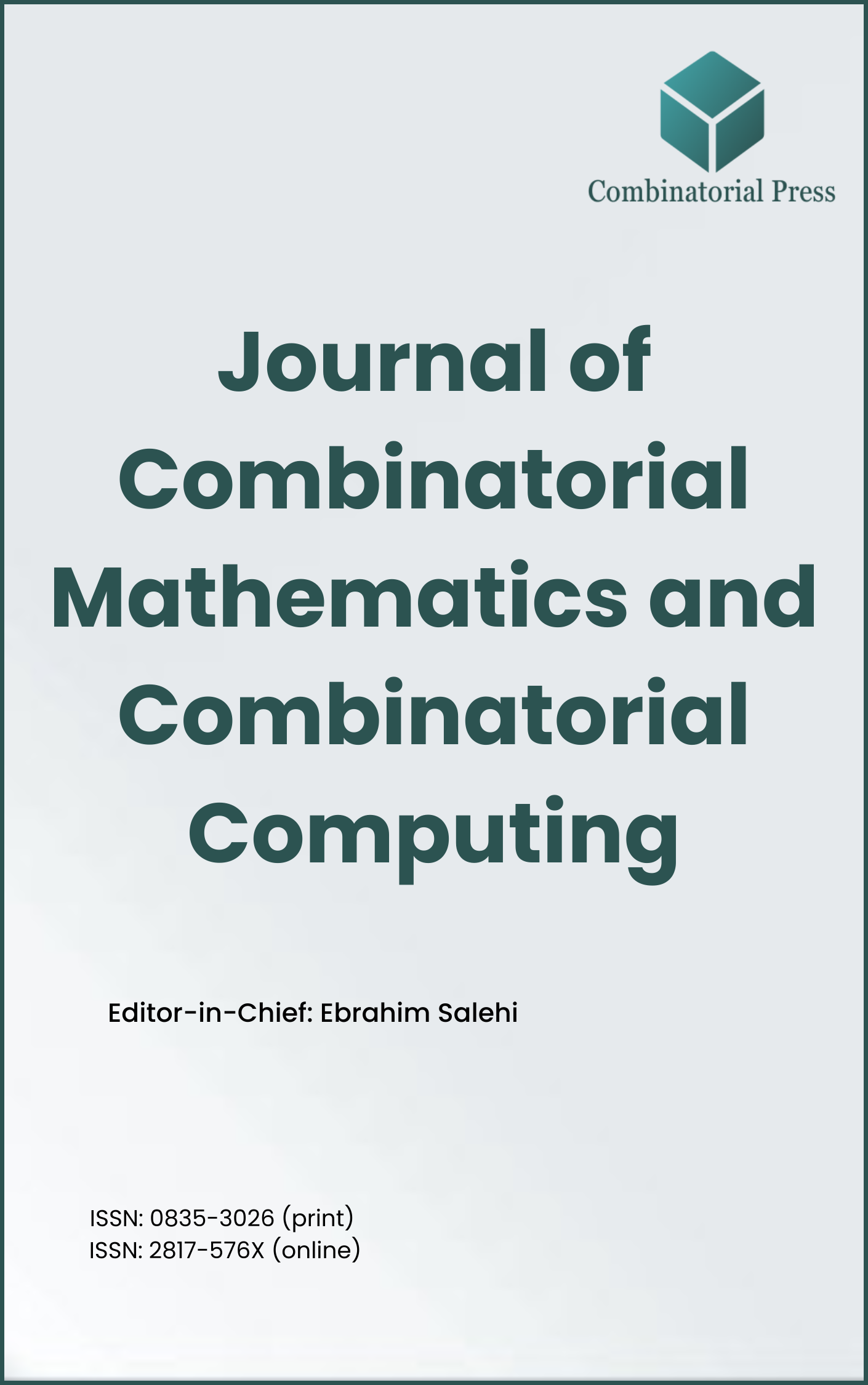
Journal of Combinatorial Mathematics and Combinatorial Computing
ISSN: 0835-3026 (print) 2817-576X (online)
The Journal of Combinatorial Mathematics and Combinatorial Computing (JCMCC) embarked on its publishing journey in April 1987. From 2024 onward, it publishes four volumes per year in March, June, September and December. JCMCC has gained recognition and visibility in the academic community and is indexed in renowned databases such as MathSciNet, Zentralblatt, Engineering Village and Scopus. The scope of the journal includes; Combinatorial Mathematics, Combinatorial Computing, Artificial Intelligence and applications of Artificial Intelligence in various files.
- Research article
- Full Text
- Journal of Combinatorial Mathematics and Combinatorial Computing
- Volume 011
- Pages: 33-46
- Published: 30/04/1992
In this paper, we introduce the concept of node expansion. Node expansion is a generalization of edge subdivision and an inverse of subgraph contraction. A graph
We consider the node expansion problem of transforming a graph to a bipartite graph with a minimum number of node expansions using
- Research article
- Full Text
- ---
- Volume 011
- Pages: 23-32
- Published: 30/04/1992
An algorithm is presented for finding all
- Research article
- Full Text
- Journal of Combinatorial Mathematics and Combinatorial Computing
- Volume 011
- Pages: 13-22
- Published: 30/04/1992
Let
-
-
and, moreover, that these properties hold for wider classes of functions which are sums involving multinomial coefficients.
- Research article
- Full Text
- Journal of Combinatorial Mathematics and Combinatorial Computing
- Volume 011
- Pages: 3-11
- Published: 30/04/1992
- Research article
- Full Text
- Journal of Combinatorial Mathematics and Combinatorial Computing
- Volume 010
- Pages: 217-221
- Published: 31/10/1991
A connected graph
- Research article
- Full Text
- Journal of Combinatorial Mathematics and Combinatorial Computing
- Volume 010
- Pages: 213-216
- Published: 31/10/1991
In this paper we obtain some inequalities on the existence of balanced arrays (
- Research article
- Full Text
- Journal of Combinatorial Mathematics and Combinatorial Computing
- Volume 010
- Pages: 205-212
- Published: 31/10/1991
Let
- Research article
- Full Text
- Journal of Combinatorial Mathematics and Combinatorial Computing
- Volume 010
- Pages: 201-204
- Published: 31/10/1991
There are two criteria for optimality of weighing designs. One, which has been widely studied, is that the determinant of
- Research article
- Full Text
- Journal of Combinatorial Mathematics and Combinatorial Computing
- Volume 010
- Pages: 193-200
- Published: 31/10/1991
In 1988, Sarvate and Seberry introduced a new method of construction for the family of weighing matrices
- Research article
- Full Text
- Journal of Combinatorial Mathematics and Combinatorial Computing
- Volume 010
- Pages: 183-192
- Published: 31/10/1991
For an integer





